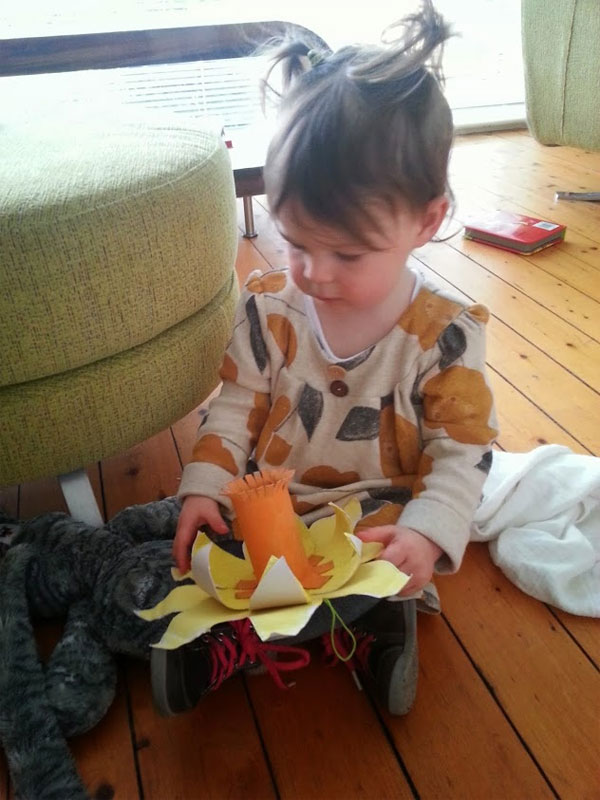Awesome Blossom
I just LOVE this time of year. There is pretty blossom sprouting everywhere! In our front garden we have pretty blossom on a tree called Amelanchier ‘Ballerina’ (it was named after me I think!) and our lovely old cherry tree. It’s a cheery sight to welcome you home. But do you know why trees have blossom? And why does it only last a few weeks? Well, read on to find out why and also, how to make a lovely Spring blossom card.
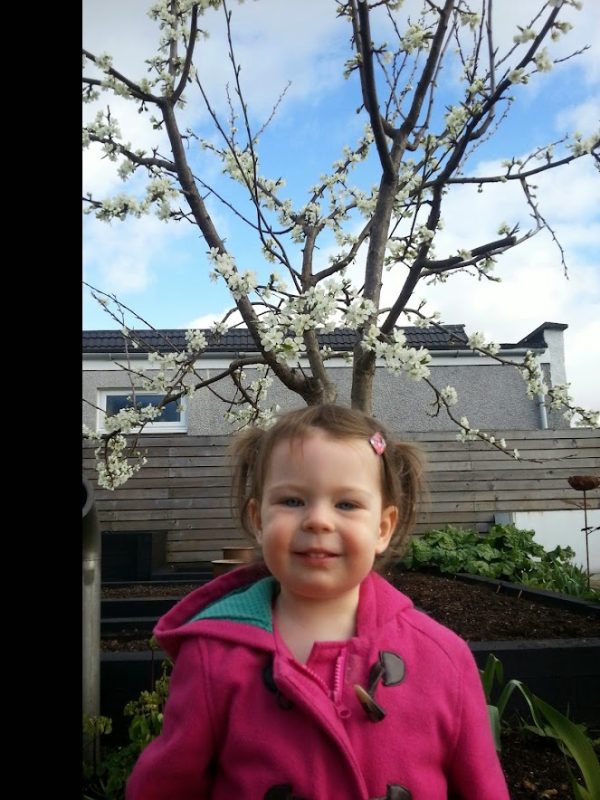
Look, I have plum tree blossom
coming out of the top of my head!
What is blossom?
Blossom is simply flowers on fruit trees. But did you know that EVERY single tree in the world has flowers? Just that some have flowers so teeny or so hidden away that it’s impossible to see!
Why do trees blossom?
Fruit trees need to attract pollinators (e.g. bees) to help it set fruit. The bees flit from flower to flower, transferring pollen between flowers to ensure pollination.
Why does blossom not last long?
It only takes the pollinators a short amount of time to pollinate the trees so then the blossom falls off. It’s a pity as it’s soooo pretty.
Even though the blossom isn’t around for long, don’t worry as I have a lovely project up my sleeve where you can recreate blossom and make a lovely Spring Card.
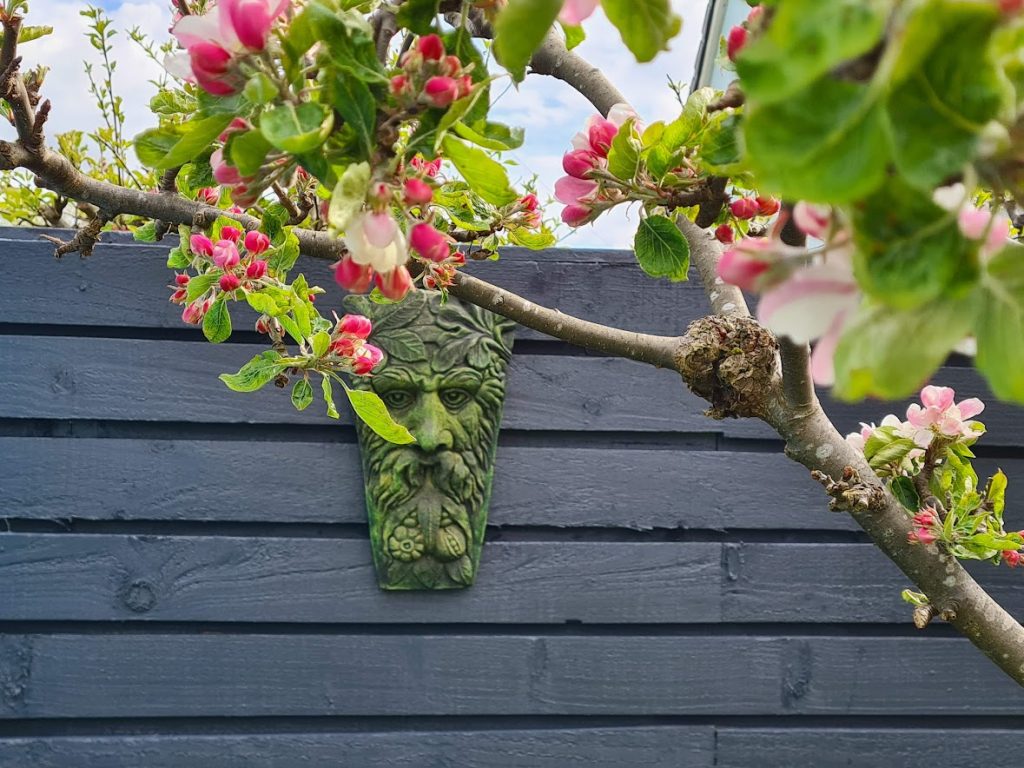
Blossom on our apple tree
Make Your Own Blossom Card
You will need:
- White card
- Paint
- Cotton wool
- Pen/crayon
To make:
1. Fold your piece of white card to make a card shape.
2. Use your pen or crayon to draw a tree trunk and branches on the card.
3. Dip your cotton wool into some pink paint and dab it around the top of your tree to make blossom.
4. Add grass (and flowers if you wish) to the bottom. Ta dah! A simple project which means you can have lovely blossom to look at for a lot longer.
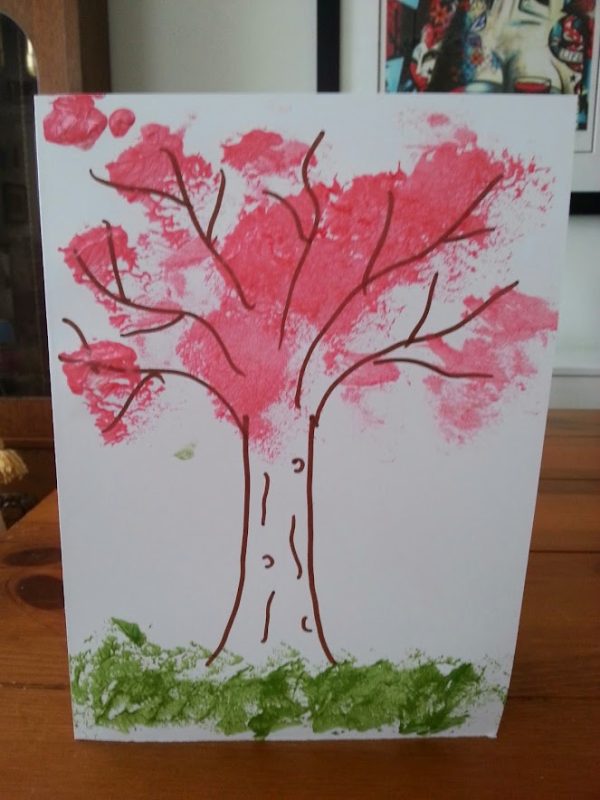
My blossom card
Ladybird Love
People often say dogs are man’s best friend but not if he is a gardener. I reckon a gardener’s best friend has got to be the ladybird. I love them ‘cos:
a. They are pretty
b. They are fun to draw
c. They eat lots of bad bugs in the garden
In my latest blog I will regale you with lots of interesting facts on ladybirds, tips on how to encourage them into your garden as well as a cool craft project featuring our spotty friends. And I will even tell you about some funky ladybird flowers to grow…
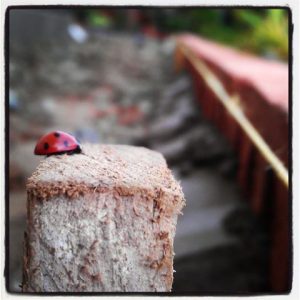
Did you know:
- There are over 5000 species of ladybirds worldwide.
- Most ladybirds feed exclusively on aphids (greenfly, blackfly etc.) which is why we gardeners love them so much. They can eat up to 5000 in a life-time! That’s a bug banquet!
- Ladybirds are more effective than poisonous chemicals.
- Their vibrant colours not only make them pretty to us but also acts as warning to predators.
- Not all ladybirds have spots – some have stripes!
- A common myth is that the number of spots on a ladybird’s back indicates its age. The most common ladybird in the UK has seven spots.
How to encourage ladybirds into your garden:
- Incorporate plants that ladybirds love into your garden. Plants such as tulips, lillies, fennel, dill, geraniums, angelica and cosmos are favourites.
- Make a ladybird house and a ladybird feeder. We will blog about how to do this soon.
- You can buy them online! Whatever next?! Wonder if you can add them to your grocery list?
Make Your Own Ladybird
You will need:
- Paper plate
- Card
- Pipe cleaners
- Googly eyes
- Scissors
- Glue
- Red and black paint

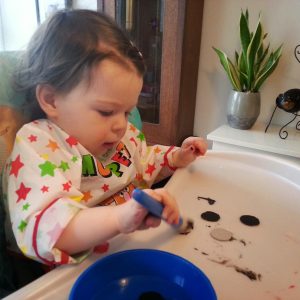
I added seven spots to my ladybird, the
most commonly found type in the UK
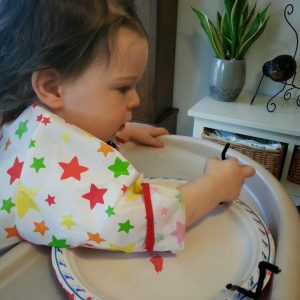
Add pipe cleaners to make the legs.
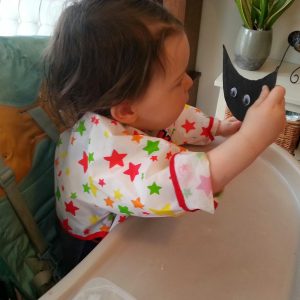
I do love a googly eye!
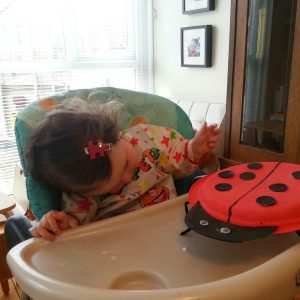
Hello little ladybug!
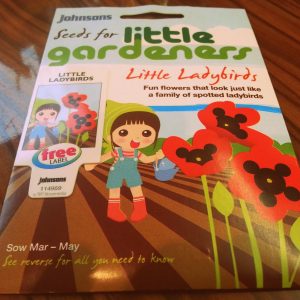
I am gonna do something funky
involving upcycling with these seeds.
So, there you have it. All the why’s and how’s of having a ladybird in your life.
A (Light) Bulb Moment – Planting Spring Bulbs
Now is the perfect time of year to get outdoors, plant some bulbs and then sit back and wait for a Spring Spectacle! Here are my top tips for planting spring bulbs. I have also included a wonderful craft project, perfect for children who love gardening and art, so you can make your own daffodil to brighten up your home through winter while you are waiting on the real ones to spring to life.
Be Prepared
Now, I ain’t no Boy Scout (I will be joining Beavers when I’m bigger though!) but when it comes to bulbs I agree with their motto “Be Prepared”. Bulbs like well drained soil so if you have heavy soil add a bit of grit to the area when you are planting. A small handful at the bottom of your planting hole is always a good idea too. And make sure you have given your garden a good old weed and tidy before you plant your bulbs too in order to give them the best possible start.
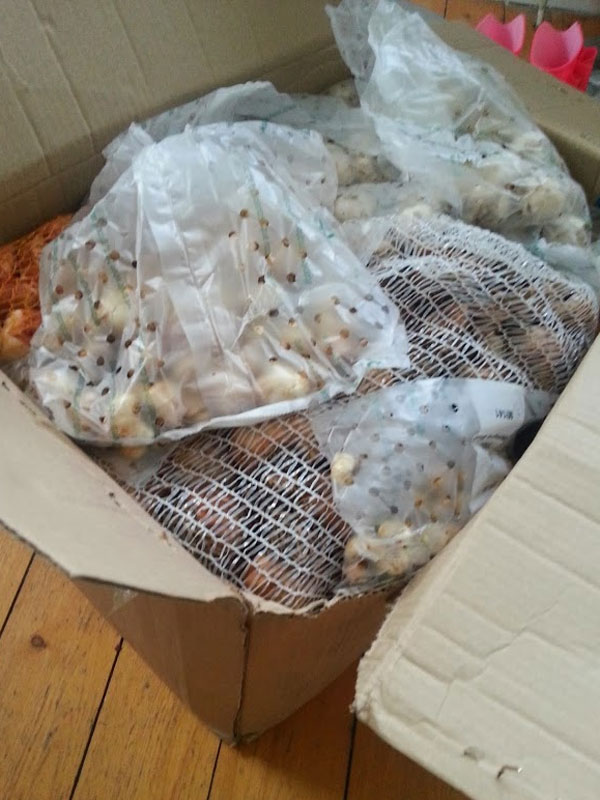
That’s a BIG box of bulbs to plant!
No Soggy Bottoms
Now, a bit like in “Great British Bake-Off”, we don’t want any soggy bottoms on our bulbs. Give the bulbs a squeeze before you buy them and make sure they are nice and firm. If you are digging out old bulbs from the shed, discard any that are soft, mouldy or shrivelled.
The Only Way Is Up
It might sound silly but plant your bulb the right way up. The top is the pointy end. The bottom is the round, hairy end (bit like my Daddy, tee hee). If you are not sure plant them on their side as they will turn themselves round the right way as they grow (aren’t plants clever?!) Some small bulbs such as fritillaria are often best planted on their side, especially in heavy soil, to stop water getting into the bulb and causing it to rot before it has become established.
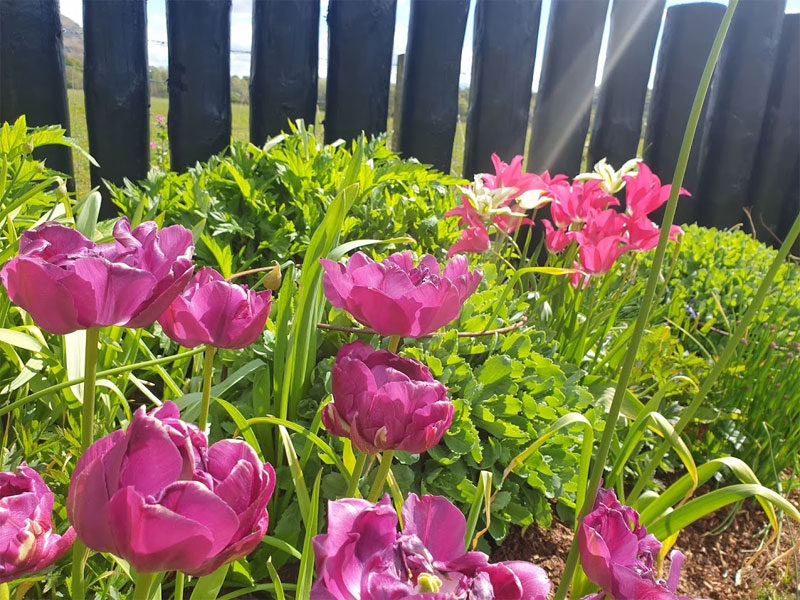
Beautiful tulips in the sunshine
Label ‘Em
It’s not just our nursery/school stuff that needs labels on them, plants need labels too. A little discreet wooden label won’t be offensive and will help you avoid putting a fork through your prized Allium bulbs 🙁
Dig Deep
As a general rule, plant bulbs two to three times their own depth and around two bulb widths apart. Replace the soil after planting, breaking down any large clumps and firm in gently, making sure there are no air spaces around the bulbs.
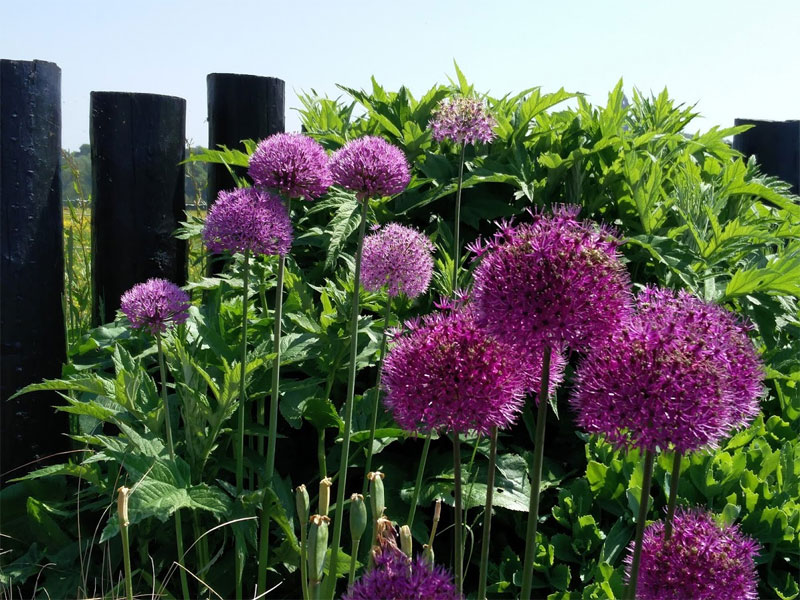
Allium Purple Sensation
Repeat After Me
After flowering, remove the seed head and wait for the foliage to yellow and die back, then lift the bulbs, clean off any soil and store in boxes or net bags in a cool, dry place. Remember to label them too! Next year you will have lovely, fresh bulbs and you can start again. You can leave the bulbs in the ground but they will eventually start to rot and die.
So there you go, a cheap and easy way to create a wonderful display in Spring and brighten up our days. But it will be a while before these beauties are ready so in the meantime M&D and I have put our heads together and come up with a wonderful craft project inspired by one of the most popular bulbs – the Narcissus. Or Daffodil to me and you!:
Make A Paper Plate Daffodil
You will need:
- Two Paper Plates
- Toilet Roll Tube
- Pencil
- Scissors
- Selection of yellow and orange paints and papers
- Glue
- String or ribbon
To make:
1. Take one of your paper plates and on the reverse side draw the outline of your daffodil shape. Ask your grown up to cut this shape out, then paint it a lovely bright yellow.
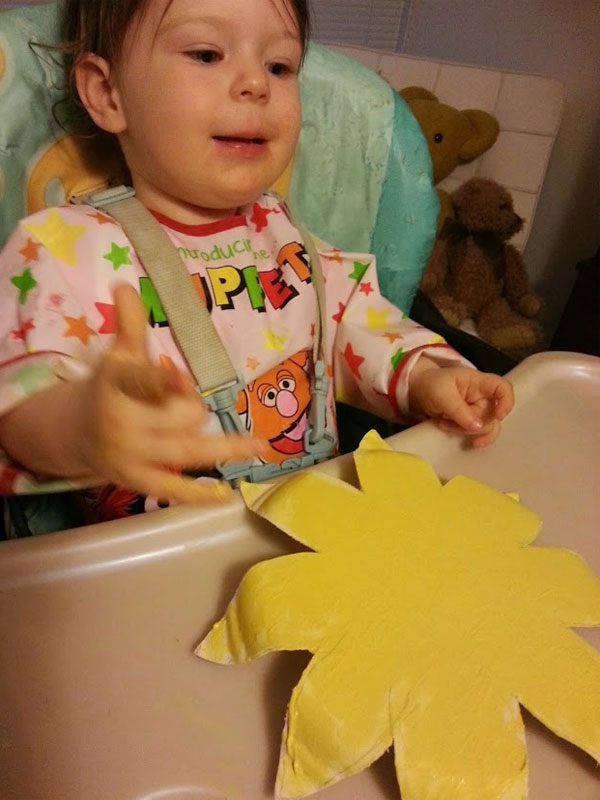
Painting the flower is a lot of fun
2. Take the other plate and draw a similar daffodil shape but slightly smaller and this time draw it on the correct side of the plate. You can paint this one the same colour, or add on some coloured paper to give a different texture. We chose some lovely yellow crepe paper to glue onto the plate.
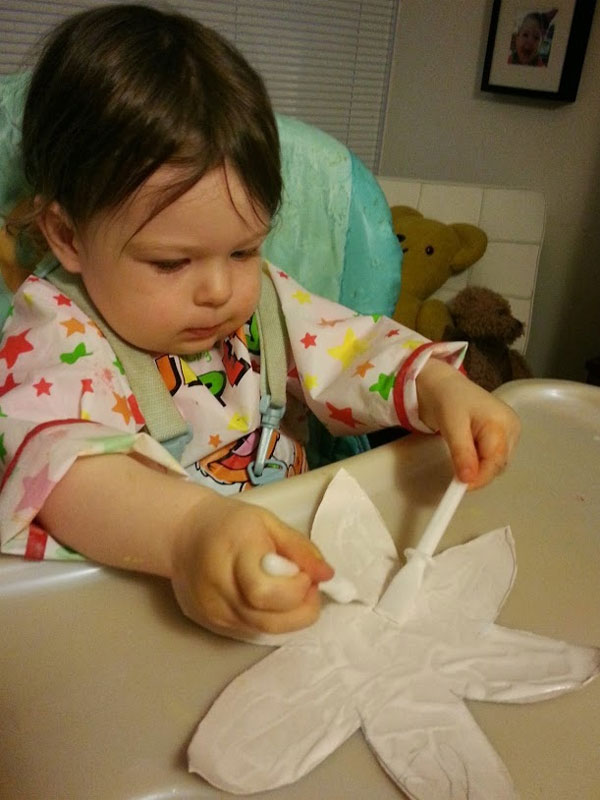
I liked adding the glue to the flower
3. Stick your two plates together. You will now have a lovely 3D effect because the plates have been used opposite ways:
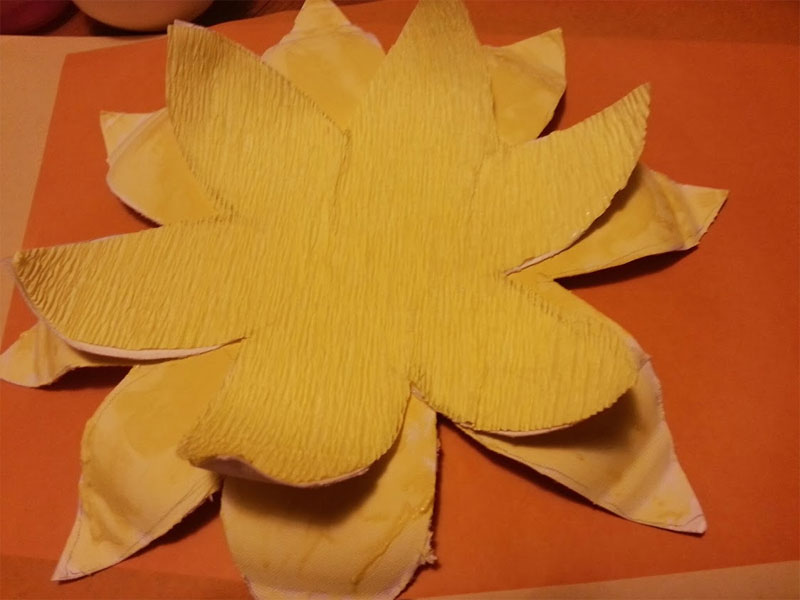
Stick the two flowers together
4. You now need to make the daffodil’s trumpet! To do this get a toilet roll tube. Ask a grown up to cut approx 2cm deep slits, approx 1.5cm wide, at one end of the tube (you will have roughly 9 “tabs” when you have finished. On the other end cut lots of slits to make a fringe effect. Once this has done paint the inside and out orange:
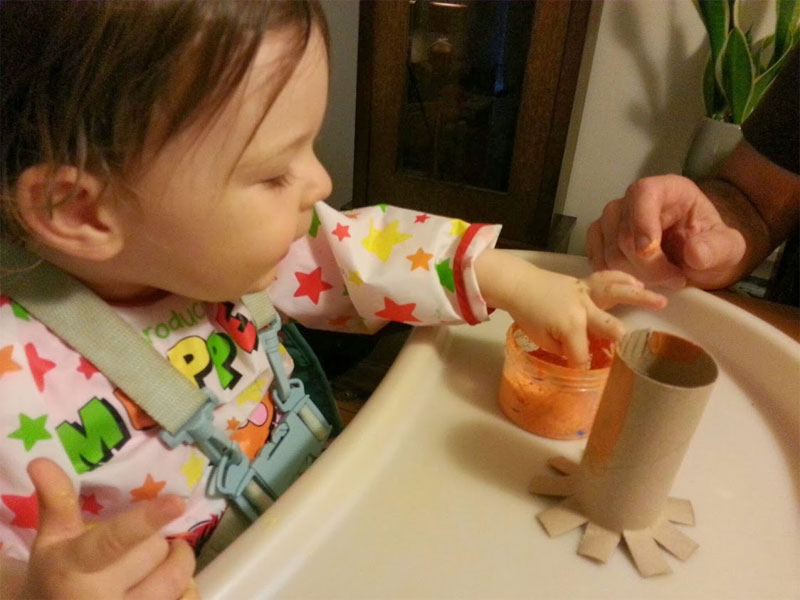
Yay, more painting!
5. Once the trumpet is dry glue the tabs and stick it in the middle of your petals and glue a loop onto the back to hang it up:
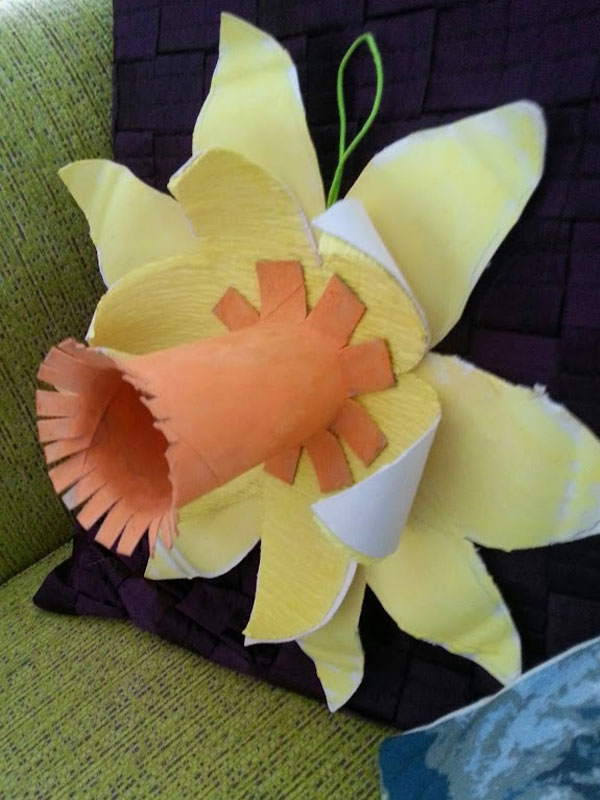
The finished daffodil to keep us cheery all winter ;
If you need any more advice on bulbs or would like to contact us about getting some planted in your own garden then please get in touch.
Lulu
